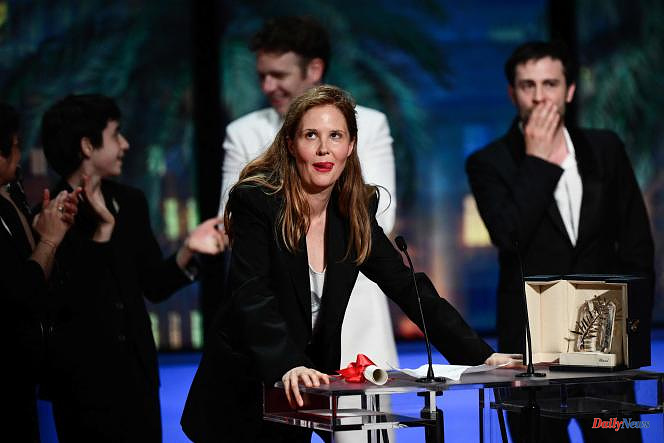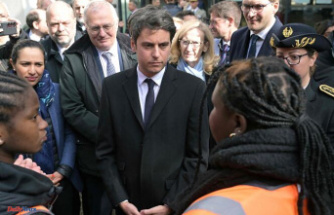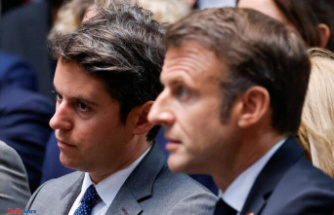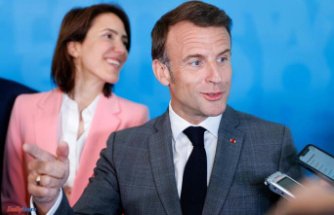Ungrateful, the Palme d'Or? Since Saturday, May 27, Justine Triet, director of the film Anatomy of a Fall, took advantage of the presentation of her prize, at the close of the Cannes Film Festival, to fire red balls at government policy, supporters of the presidential majority criticize the filmmaker for his lack of recognition. Supporting, in subtext, the idea that a film benefiting from public aid should spare the State which financed it.
“This film would not have been possible without our French film funding model, which allows for a diversity unique in the world. Let's not forget that," Culture Minister Rima Abdul-Malak tweeted. "Anatomy of the ingratitude of a profession that we help so much...", added the Minister Delegate for Industry, Roland Lescure. Charles Sitzenstuhl, Renaissance deputy for Bas-Rhin, meanwhile, joked about the "living room rebels" who would ignore that, far from the neoliberalism criticized by the director, France "subsidizes its cinema industry with public funds".
"To carry our opinions, yes, but do not forget thanks to whom we can work and carry out our fights", continued Deborah Abisror-de Lieme, secretary general of the Renaissance group at the National Assembly, pointing to the support given to the production of the film by the National Cinema Center (CNC) and the public channel France 2. For his part, Emmanuel Macron refrained from publicly congratulating the winner, Justine Triet, when he had done so in 2021 when the Frenchwoman Julia Ducournau had been rewarded.
Behind this almost unanimous condemnation on the part of the presidential majority, however, hides a big misunderstanding as to the nature of aid for film production and what it entails.
A multitude of funders
Anatomy of a Fall was produced with a total budget of 6.2 million euros, half of which came from public entities. Its director, Justine Triet, claims it: "Without this cultural exception, I wouldn't be here in front of you! “, she recalled during her speech of thanks, while calling to protect this exception.
According to the film's financing plan, published by the specialized site Ecran Total, the various contributions come from the following sources:
The film's budget therefore comes 35.7% from public institutions, or 50.2% if we add the contributions of France 2, a state-owned company. This does not mean, however, as several members of the majority suggest, that the work was subsidized by the State, and that its director should mechanically be indebted to her.
The reality is much more complex: some sums paid may be reimbursed, or grant certain exploitation rights; and none offers a right of scrutiny to the State.
The National Cinema Center, an independent body
Since its creation in October 1946, the CNC has been an independent public institution. It does not depend directly on the government, and, above all, it is financially autonomous. Indeed, contrary to what has been said, a film financed by the CNC is not funded by taxes from French taxpayers, but by a tax system on the film industry. This essentially redistributive system is based in particular on a tax levied on the sale of cinema tickets. Thus, Hollywood blockbusters or hits like Super Mario Bros. contribute to filling the French cinema financing fund. Publishers and distributors of television services, such as streaming platforms, have had to pay a similar tax since 2010.
Moreover, the "advance on ticketing receipts" of 500,000 euros from which Anatomy of a Fall benefited is not unilateral aid. As the name of this system suggests, the CNC can partially reimburse itself with the film's receipts (from 25% to 80% of the sums advanced, depending on the case, minus a deductible of 50,000 euros). Concretely, if the Palme d'or is a major success in theaters, its producers will have to reimburse some 350,000 euros to the CNC.
The tax credit of 1.2 million euros which the film benefited from comes from the state budget. This device makes it possible to indirectly finance cinematographic creation by reducing the tax bill of the companies producing the film.
However, the granting of this tax credit does not depend on the government, but, here again, on the CNC, whose independent committee of experts decides whether a film is eligible for it, according to various criteria (filming in France, promotion of the French language or a French regional language, etc.). This tax credit can cover up to 80% of a film's total budget, up to a limit of 30 million euros. The one Anatomy of a Fall got covers less than 20% of its budget.
For communities, investments for employment
The participation of the Auvergne-Rhône-Alpes Cinéma agency and aid from the Nouvelle-Aquitaine region and the Charente-Maritime department are conditional on filming or post-production in the regions and departments concerned. This allows these territories to enhance their architectural and natural heritage, highlighted in the film, but above all to support local film industries, and more broadly the economy.
For example, the shooting of scenes in chalets in Savoie and Isère of Anatomy of a Fall would have brought in 700,000 euros in direct expenses – hotels, technicians, various filming costs –, according to the director of Auvergne- Rhône-Alpes Cinema, Grégory Faes, quoted by France 3 Regions. As this regional agency is also a co-producer of the film, it can claim part of the revenue from it, on theatrical or television exhibition, for example.
Public broadcasting, a producer doubly interested
Finally, it is wrong to compare the support of France 2 to a public subsidy. By spending 450,000 euros in "presale", the public channel ensured the primacy of the television broadcast of Anatomy of a Fall, jointly with Canal, which paid 1.2 million euros.
As for the 450,000 euros disbursed by France 2 Cinema as a co-producing company, they entitle it to part of the film's receipts.












